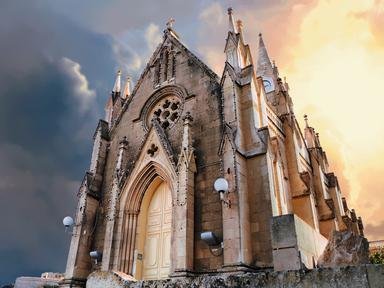Quiz Answer Key and Fun Facts
1. In Western Christianity, what event does Epiphany primarily commemorate?
2. In Eastern Christianity, what event does Epiphany primarily commemorate?
3. On which of these days is Epiphany most commonly celebrated in Western Christianity?
4. Which of the following is NOT another name that has sometimes been used for Epiphany?
5. Matthew, which tells the story of the magi, says, "And when they were come into the ____, they saw the _____ with Mary his mother, and fell down, and worshipped him." What words are missing from these blanks in the King James Version of the Bible?
6. Tradition gives names to the three kings. Which of the following is a traditional name of one of the magi?
7. One Epiphany tradition in some areas is to eat king cake. At what other time of the year is king cake commonly eaten?
8. In England, on Epiphany, youth and children often walk from house to house singing. What do they traditionally carry with them?
9. Which of the following songs is a Lutheran hymn for Epiphany written by Georg Weissel?
10. In which century do we find the earliest explicit reference to Epiphany as a Christian feast?
11. What Epiphany hymn contains the chorus "O Star of Wonder, Star of Night, / Star with Royal Beauty bright, / Westward leading, / Still proceeding, / Guide us to Thy perfect Light"?
12. In tradition, the three gifts of the magi are often regarded to have a spiritual meaning. What is the myrrh typically thought to symbolize?
13. In some parts of the world, during Epiphany, the initials of the three magi are written over the doors of churches and homes as a blessing. What is traditionally used to write these initials?
14. What British poet wrote the Epiphany hymn "As with gladness, men of old" on Epiphany in 1859?
15. In tradition, the three kings are often depicted as traveling on three different animals. Which is NOT typically one of those animals?
16. In which of these countries is it a tradition for children to write a letter to the magi with their wishes and then leave their shoes out to be filled on Epiphany Eve, along with grass and water to feed the camels of the visiting magi?
17. In Italian folklore, what old woman rides a broomstick through the air to deliver gifts to children on Epiphany Eve?
18. In what country, where Epiphany is known as Bogoyavlenie, does a priest throw a wooden cross into a frigid body of water so young men can race to retrieve it?
19. What American short story writer penned a famous tale about giving titled "The Gift of the Magi"?
20. T.S. Eliot's poem "Journey of the Magi" ends: "We returned to our places, these Kingdoms, / But no longer at ease here, in the old dispensation, / With an alien people clutching their ____." What were the people clutching?
Source: Author
skylarb
This quiz was reviewed by FunTrivia editor
looney_tunes before going online.
Any errors found in FunTrivia content are routinely corrected through our feedback system.

